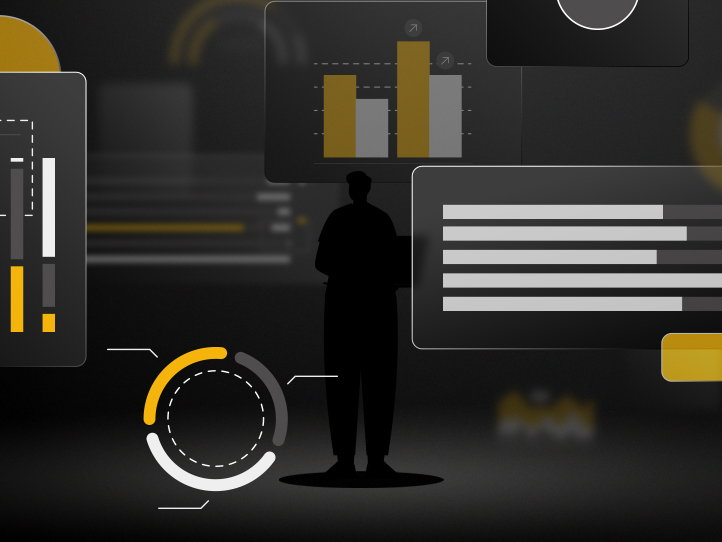The four simple steps to a high-impact, low-cost content strategy

A content strategy doesn't have to cost the world
The creation of high-quality content is essential for any digital marketing strategy. If crafted and broadcasted effectively, digital content can help you achieve a wide range of goals for your business, including increasing your website traffic, reaching new prospects, bettering your brand’s reputation, and improving your online presence.
However, creating new, fresh and strong digital content on a regular basis can be both time-consuming and expensive – luxuries which many of us can’t afford right now.
In this blog, we outline how to simplify things, extend your subject matter’s lifecycle and make the most out of your available resources, through content planning, repurposing and promotion.
1. Waste not, want not
One way to simplify the process of content creation is to repurpose what you’ve previously published. This recycling of pre-existing content saves you the time and expense of coming up with new ideas and developing original content from scratch, by breathing new life into what you’ve already developed.
The first step is to catalogue all of your existing content and highlight the most relevant to share as quickly as possible. The types of content you could catalogue include blog articles, reports, case studies, thought-leadership pieces, white papers, magazines, videos and podcasts.
Your online audience grows and changes over time – be it blog readers, social media followers or email/newsletter subscribers. Some of them will not have been aware of content you published 18 months ago, so repurposing this increases its exposure to new audiences.
Additionally, a topic that struck the right chord with your audience once is more likely to gain traction than a completely new one, so outlining your best-performing content pieces is vital. High-performing content has a much higher ROI potential than that which didn’t perform well the first time around, as well as being likely to include nuggets of useful information, which you can use as a basis and expand on, when repurposing.
Additionally, republishing existing content on specific topics establishes your expertise in these areas, and your audience will start perceiving you as an authority figure in your industry. This, in turn, strengthens your brand’s reputation and credibility, and can even improve your search engine ranking.
Search engines have a preference for websites that deliver valuable and meaningful content to their users. Repurposing content allows you to target the same keywords over and over again without the risk of duplication, and – if the content is of a high perceived quality - search engines will recognise your expertise in these areas, and reward it by ranking you more highly, increasing your brand’s exposure and reputation.
Once you have catalogued your content, it’s time to consider how exactly you’re going to share it, and who you want it to resonate with.
2. Plan for success
In the planning stage, specific audience segments should be identified and targeted, based on your existing followers, prospects, customers and business objectives. Content is often used as a tool for traditional lead generation, particularly in B2B marketing; through the use of collateral such as white papers, reports and webinars; so, ensuring your content strategy aligns with your new business objectives is essential.
Then, to amplify the reach and exposure of your content, the best channels and times to reach your selected target audiences should be considered and combined into a post schedule. You should also consider whether the content could be adapted into new and different mediums than it was previously. For example, a webinar could be turned into a series of explainer videos for distribution on social.
And always remember to check the content in the context of today’s unique environment. If it contains an overtly selling message, it either needs to be repackaged or discarded. It is important to strike the right tone with your messaging, which should remain sensitive and thoughtful.
3. If you’ve got it, promote it
Promoting through paid advertising allows you to amplify your content to reach more people, and, if done effectively, can grow your brand’s online following and drive sustained levels of relevant and engaged traffic through to your website.
Typically, social media is the best channel to use for the promotion of content, with the specific channel mixture depending on your budget, your target audience and the type of content that’s being promoted. LinkedIn and Facebook advertising can be particularly effective, and you can see some example creatives from a social media advertising campaign we ran for Epson recently here.
Advertising using retargeting can also be used to show content to previous website visitors, to encourage them to return to your site and keep your brand at the front of your customer’s mind.
4. Metrics make perfect
With any digital content strategy, it’s crucial to measure the effectiveness of the content to allow you to see what material and placement are performing best, so you can refine and optimise your activities, to receive the highest possible levels of engagement.
For performance analysis on social media, key metrics to track include:
- Reach
- Impressions
- Click-through-rate (CTR)
- Number of followers
- Likes
- Shares
- Comments
- Engagement rates
Most social media platforms offer some kind of analytics which you can access through your profile. There are, however, a variety of tools which offer more in-depth analysis of your performance, including Hootsuite, Fanpage Karma, Keyhole and AgoraPulse.
To gain valuable insights into your content performance on your website, Google Analytics is a fantastic tool to identify the most popular pages on your website, and provide detailed information on metrics such as page views, sessions, time-on-site, bounce rates, and landing and exit pages.
Once you have identified what content is receiving the highest levels of engagement, the most successful posts can then be boosted through targeted advertising to reach new relevant users in your target audiences.
Get in touch
When it comes to digital content, our in-house team can take care of everything: from determining the strategy and executing lead generation campaigns, to designing, copywriting and animating your content. And it’s all tied together by our expert strategists, who’ll work with you to ensure we meet– and exceed – your expectations.
If you’d like to find out more about what type of content strategy would best suit your business, and how we can help you deliver it, get in touch today.

.avif)






